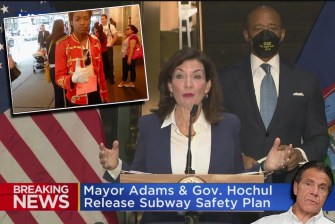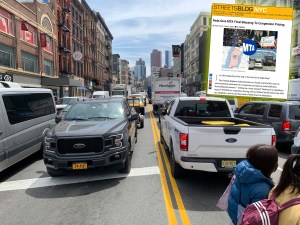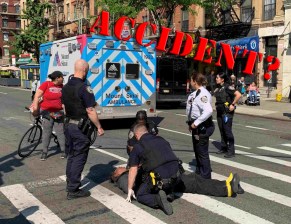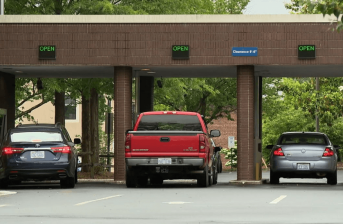Op-Ed: The Killing of Jordan Neely and the Broader Failure of New York’s Police-First Policy
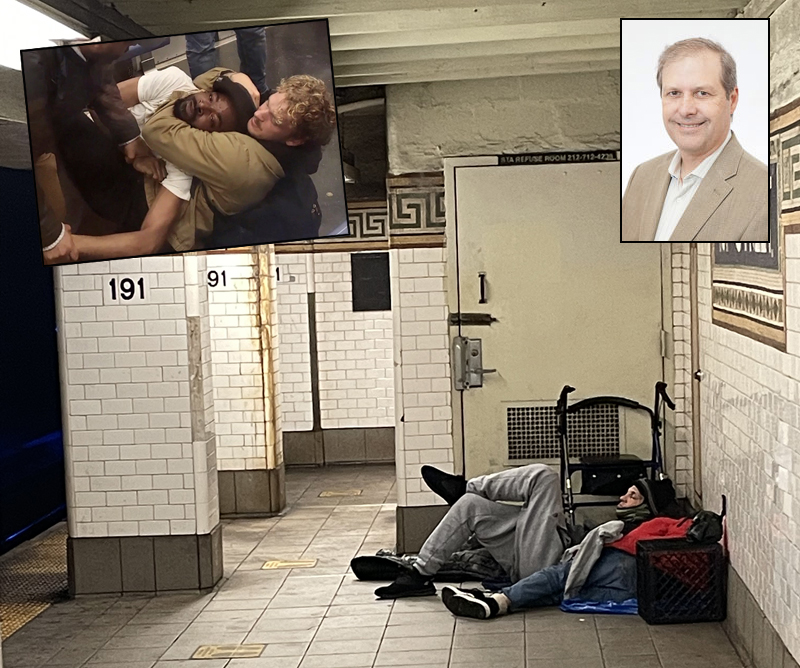
This piece was first published on the website of TransitCenter.
New York is still reeling from the horrific video-taped killing of subway rider Jordan Neely by a fellow passenger while he was having an apparent mental health crisis. The alleged killer, Daniel Penny, used a chokehold against Neely for over 10 minutes despite being warned that it could kill him. No charges have been filed. Over the weekend, protestors angered by the killing and the inadequate response by New York City’s Mayor, Eric Adams, blocked trains by holding open train doors and by jumping onto the tracks. Throughout his tenure as Mayor, Adams has been unwavering in his support for using police to manage the presence of people with no housing and inadequate mental health care.
This act of vigilante violence has brought to the fore the crisis of how to address safety in public transit facilities. What we are witnessing is the consequences of a profound failure of cities to address the much broader issues of widespread homelessness, the inadequacies of our mental health systems, and the decision to respond to the tragic results with a rhetoric of demonization and policies of criminalization. Neely’s tragic and avoidable death requires that we move beyond the calls for accountability for the perpetrators to demanding political accountability for elected leaders who have failed Neely and millions of other Americans facing housing and mental health insecurity.
Public transit remains, by every objective measure, a very safe way to get around. But it is also true that these same leaders have failed public transit riders by refusing to provide struggling people with holistic support services, heightening the risk that riders will encounter someone in crisis.
Neely had been homeless for years, and many New Yorkers were familiar with him as a subway and street performer who was an expert Michael Jackson impersonator. The day he was killed, witnesses report that Neely was in a deep crisis—expressing the need for food and shelter and engaging in disruptive and possibly even threatening behavior. The passengers that subdued him, especially the one who placed him in a chokehold may well end up facing legal consequences following an investigation by the local police and District Attorney Alvin Bragg. But will there be a similar process to hold accountable Mayor Adams and other elected officials who have responded to the city’s homelessness crisis by turning it over to the NYPD? For the leaders who have framed the issue as a problem of unhinged individuals rather than a profound failure of government to insure people have access to safe, stable, and supported housing?
We’ve been here before
New York’s homelessness crisis has been decades in the making. In the 1970’s and 80’s, local leaders responded to federal cutbacks and the pressure to stop capital flight by subsidizing the finance and real estate industries and cutting essential services. The cumulative effect of this austerity budgeting has been the creation of massive inequality that produced a class of new billionaires and hundreds of thousands of people living on the streets, in public transit, in shelters, doubled up, or in other forms of insecure housing. And then when the impact of this policy failure results in increased disorder and at times violence, the response from politicians and the media is to blame the victim.
Each time this happens it is treated as a new crisis that must be dealt with immediately through intensive policing. Any talk of investments in supportive housing and mental health services is dismissed as incapable of providing the immediate relief being demanded. But time and time again, elected officials have refused to even begin the process of developing long term strategies. Instead they rely on rhetoric of criminalization and demonization describing those in distress as a threat to riders. These characterizations are echoed by local media, some of whom jump at every opportunity to describe the subway system as unsafe and out of control, even when actual crime rates are low and declining.
A policing-only strategy is guaranteed to fail
The result of this has been both to increase the costly presence of police in transit and to create a rhetorical space that enables vigilantism. It is well known that increased police presence in transit systems produces racially disproportionate criminalization of people of color, the poor, and other vulnerable populations. It is also hugely expensive. California’s BART police costs the system over $90 million a year, 10% of the entire budget. The Los Angeles Metro system spends $150 million a year on policing. The NYPD’s Transit Bureau spends more than $250 million a year.
In addition, this rhetoric and the inability of police-centered strategies to really solve the problem gives way to privatized vigilante violence. In 2021, riders captured video of members of the Guardian Angels using violence against subway riders, claiming to address disorderly passengers, who were actually going home from a Stonewall commemoration protest. And of course there is the 1984 incident in which Bernard Goetz shot four riders by whom he felt threatened. Empowering this outsourcing of violence to attempt to produce security is a tragic step in the wrong direction by elected officials and the media who are more concerned about maintaining support for policing than producing true public safety.
But even this debate over the provision of essential services versus the need for immediate securitization is a bit of a false choice. There are interventions we could engage in today to immediately address the problem without having to rely on policing and forced hospitalizations. During COVID the city placed people in dozens of hotels around the city to create safe and immediate housing for thousands. But with the waning of the pandemic, and the return of tourists, these hotels were turned back over to the private market and their residents too often put back on the streets.
Transit systems have had to bear much of the burden for these policy failures. As public and semi-public spaces, public transit has become a refuge of last resort for many, representing a space that is out of the elements, safer than shelters and streets, and a place to panhandle. This places a significant burden on other passengers and the systems themselves. Our municipal leaders must do their jobs in order to allow transit agencies to focus on theirs – getting trains and buses out the door every morning.
A different world is possible
A growing number of systems are turning away from police centered strategies. They are looking to civilian ambassadors, wayfinders, and outreach workers. Just last year, New York placed many of their station agents outside their hermetically sealed token booths to more easily interact with passengers. But these agents have limited training in dealing with those in crisis and quickly turn to police to fill the gap. More needs to be done to create a workforce capable of both offering directions, being responsible eyes and ears, and offering assistance to those in crisis.
Some cities have created new ambassador programs as an alternative to policing to create a safer riding experience for all. Los Angeles approved its new Metro Ambassadors program in 2021 in response to demands for non-police safety strategies. They are currently hiring 300 people to work in the bus and subway systems to help riders navigate the system and to connect people in distress with services. California’s BART system has had ambassadors since 2021. These workers focus specifically on passengers in crisis and have extensive outreach training. Portland’s TriMet system is also ramping up non-police crisis intervention teams to connect people with essential services. In Chicago, community based “violence interrupters” have been riding trains at times to try to stem the violence, calling for a more concerted effort to be funded by the transit system or city government.
But so long as city leaders abdicate their responsibility to care for all their residents, there is a limit to what transit systems can do on their own. Without adequate housing and mental health services in the community, even well-trained outreach workers have limited options. Transit systems need to join the chorus of people demanding that cities provide adequate services. Even the best trained and qualified civilian staff can only do so much if there are no services available to help people in crisis. At best agencies can try to stabilize individuals living in transit systems and reduce their impact on other riders.
Alex Vitale is a sociology professor at Brooklyn College.
